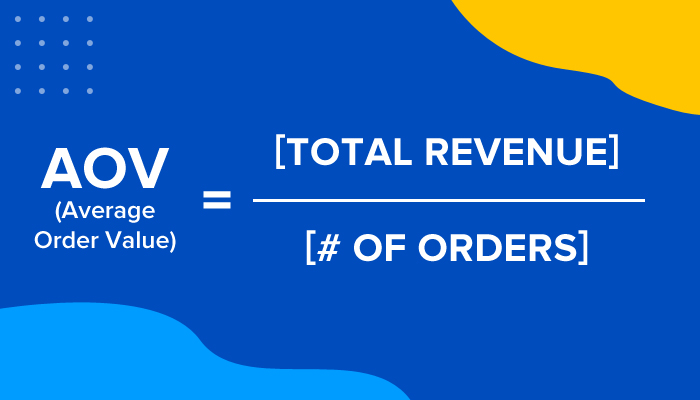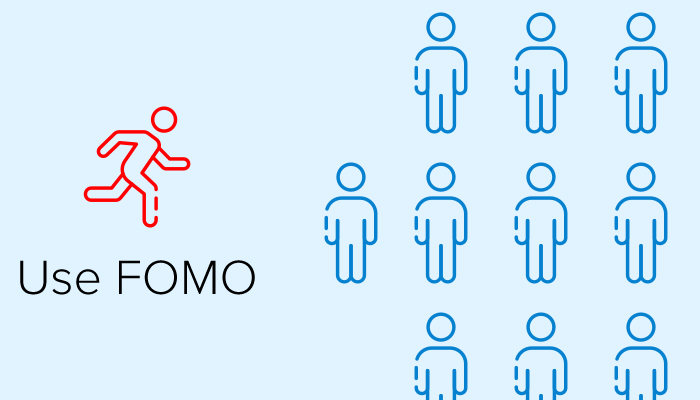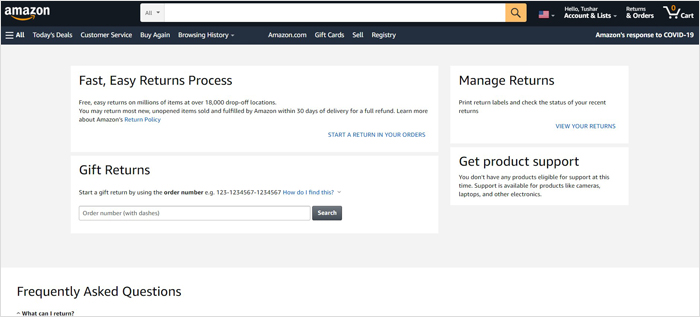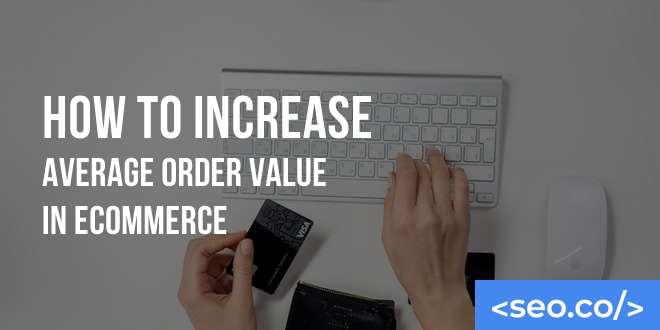It’s estimated that the ecommerce industry will be 2.14 billion global online consumers by the end of 2021.
And if you look at this number in comparison to the number of people in the world over the age of 18, it means more than 36 percent of people on the planet are online shoppers.
But despite the steep rise of ecommerce over the past couple of decades, it’s still a highly competitive marketplace for online businesses. With so many different competitors to choose from, consumers have all of the control. In other words, they can shop around on their terms until they find the right product or best deal.
Conversion rates in the ecommerce industry tend to land somewhere in the 1 percent to 2 percent range for most sites. And with such a low percentage of traffic actually making a purchase during any given visit, there’s even greater pressure to maximize the value of each conversion. This is why increase average order value is so important.
Table of Contents
What is Average Order Value?

Average order value, which is often abbreviated to AOV, is basically the average amount a customer spends per order on your website. In other words, it’s the average dollar amount someone typically spends when they input their credit card information and hit the buy button.
Calculate average order value is pretty simple. It looks like this:
AOV = [Total Revenue] / [# of Orders]
For example, let’s say your total revenue for Q1 was $100,000 and there were 1,562 individual or average order value during that period of time. You would take 100,000 / 1,562 = 64.02. That means your average order value for the quarter was $64.02.
Why Average Order Value Matters
The AOV calculation is simple – some might even say elementary – but it has a significant impact on the overall health and profitability of marketing your ecommerce business.
AOV matters for a number of reasons. For starters, it’s much easier to get a customer who was already planning to spend $100 to spend $150 than it is to drive two customers to your website and convince them each to spend $75 (for a total of $150). And it’s significantly easier to have one customer spend $150 than to have 10 customers spend $15 each. (You get the idea.)
Small incremental gains in AOV make a huge difference. Consider our calculation from the previous section above. If you know that the average customer is spending $64.02, you might set a goal of increasing that number to $75 per customer. In other words, your goal is to get them to shell out another $10.98 per transaction.
On a micro scale, $10.98 per transaction isn’t very much. It’s not going to make or break the average customer. But when you extrapolate it out and view it from a macro perspective, it has a major impact on your total revenue. Rather than earning $100,000 from 1,562 transactions, a $75 AOV takes your revenue to $117,150 for the quarter. And that’s without adding a single new customer behavior or transaction.
Now here’s where things get really exciting. By simultaneously increasing both AOV and the number of transactions (either by attracting new customers or getting existing customers to make more purchases during the period), you boost your revenue even more.
Continuing with the same numbers, let’s say you’re able to convince some of your customers to make an additional purchase and also add a few more new buyers into the mix. This gives you an increase of 438 transactions for a total of 2,000 transactions in Q1. At a new $75 AOV, this brings your revenue to $150,000.
Suddenly, you’ve increased your revenue by 50 percent, despite only increasing the number of transactions by 28 percent. This is a powerful shift that totally changes the trajectory of your business. Instead of making $400,000 in revenue per year, your e-commerce store or site is now making $600,000. And one of the fundamental driving forces in that gain came from a small increase in AOV.
12 Tactics for Increasing the Average Order Value
Increasing AOV doesn’t require an advanced degree in aeronautical engineering. It’s simply a mixture of understanding buyer psychology and making small tweaks to your content, design, and offers. Here are a few of our favorite tactics:
1. Targeted Recommendations
The beautiful thing about browser cookies and customer accounts is that you can track which complementary products customers view and purchase. This allows you to offer targeted recommendations based on their personal interests and needs.
You can also present targeted recommendations based on what other customers are buying. So if you know that customers are likely to purchase a pack of 100 golf tees any time they buy a dozen golf balls, it’s smart to recommend the former when the latter is added to a shopping cart.
2. Upsells and Cross Sell
Two classic ways to increase AOV include upselling and cross sell. And while they’re usually mentioned in the same conversation, they are distinct approaches.
- Upselling: The practice of getting customers to purchase a more expensive or higher-end product than they were originally anticipating buying. An example would be encouraging a customer to buy a $400 premium version of a watch, rather than the $250 base model.
- Cross-selling: The practice of getting a customer to purchase complementary or related items. An example would be getting a customer to purchase cutlery in addition to a set of plates.
Upselling and cross sell typically happen independently from one another, but could technically be applied together to exponentially increase AOV. Upselling and cross-selling is one of the main functions of marketing funnels.
3. Minimum Discount Threshold
One classic way to throttle your AOV is to offer minimum discount thresholds. For example, you could offer a $20 off for anyone who spends $100 or more.
To make a minimum discount work for you, think about your top selling products and their average price points. The example above would work well if your average product sells for $75. This encourages the customer to purchase two products ($150) just to save $20. This brings their total to $130 (which is 73 percent more than the standard $75 purchase).
4. Free Shipping Minimum
Free shipping threshold minimums are a classic method for increasing AOV. In order for a customer to get or offer free shipping threshold, they must place a minimum purchase order. (Pretty simple and straightforward.) The biggest key is figuring out what this minimum threshold should be.
To determine your minimum threshold, analyze your current AOV. If you’re currently hovering around $25, it would be smart to bump the offer free shipping threshold minimum to $30. This puts the average customer within striking distance and makes them think, “Shipping costs $7. I might as well spend another $5 to save $7.” And while that’s a logical train of thought from the shopper, most aren’t going to spend $5 even. They’ll add another $7, $10, or $12 to their cart. This gives you higher AOV and beefier net profits.
5. Product Bundles
Why sell a customer one product when you can sell them three? It’s obviously not that easy, but there is one simple way to increase your chances of increase average order value. It’s called product bundling.
With product bundles, you sell a customer multiple related or complementary products as part of a package and give them a discount for purchasing all of the items in a single order.
For this approach to work, the discount can only be presented when all items are purchased as a collective set. If the customer attempts to purchase them individually, they pay the full price.
An example of a product bundle for a sporting goods website would be a “T-ball starter set.” While a customer could purchase a baseball glove ($20), baseball bat ($25), and a pair of cleats ($30) individually for a total of $75, the bundle knocks the price down 20 percent to just $60.
The idea is that most customers would only purchase one or two of these items individually. But when presented as a bundle, they feel like they’re getting the third item for nothing. So instead of getting the customer to spend $45 to $55, you’re increasing the transaction to $60. That’s a 9 to 33 percent increase.
6. Monthly Subscriptions
Subscription business models are amazing. However, we don’t typically view them as part of an eCommerce store sales strategy like pricing strategy. Perhaps we should?
Monthly subscription services are a great idea if you sell products that need to be replenished on a regular basis. This gives you a predictable stream of revenue and basically locks you into long-term profits.
Subscriptions can also be used to sell ancillary products associated with your core products. For example, let’s say you sell dog food. You could cross-sell your customers into a monthly subscription box that delivers a new variety of dog treats and a premium newsletter on how to train dogs even as they age. Both of these are low overhead items that can move the AOV “dial.”
By adjusting our SEO pricing to offer discounts such as volume discounts for subscriptions, we have implemented this very practice and increased our overall revenue substantially as a result.
7. Customer Loyalty Programs
Most ecommerce companies think about customer loyalty in terms of increasing customer lifetime value. And while it’s certainly great in this regard, it can also be a powerful ecommerce tool for increasing AOV.
Most loyalty programs offer some form of a discount or other perk. Plus, the simple fact that they’re a part of a program makes them automatically feel a greater sense of connection to the brand. It’s for both of these reasons that loyal customers spend 120 percent more than new encourage customers on an annual basis.
8. Use Shopper Browser History
Amazon, Walmart,online store and other ecommerce giants do a phenomenal job of leveraging a customer’s browser history to continue targeting them with products.
As you know, only a percentage of loyal customers purchase a product the first time they view the product listing. Many shoppers view a listing, leave, online store, return a few hours later, leave again, and then finally make a purchase sometime over the next 24 to 72 hours. (Sometimes it happens days or weeks later.)
By prominently showing a customer the products they’ve previously viewed, you’re able to keep these products top of mind. One of the best ways to do this is by presenting a small banner or prompt during the checkout process. You might even combine it with a discount and encourage customers to add a previously viewed product to their average order value. (The customer has already been anchored to the higher price. The discount makes the offer relevant and attractive.)
9. Segment Your List
Your encourage customers can’t all be lumped into one big category. Though it’s nice to know the overall AOV for all customers, it may be more beneficial to zero in on specific segments. In particular, you should segment your email list based on three categories: high spenders, average spenders, and low spenders.
When you know who your high, average, and low spenders are, it allows you to tailor better offers to each customer. You know your high spenders will likely be more responsive to upselling and cross sell. Your low spenders, on the other hand, will require a more strategic and incremental approach.
With lists segmented, your offers, promotion, and email copy become personalized and dynamic. You’ll see an uptick in each group without causing unnecessary attrition by presenting irrelevant and unappealing offers.
10. Use FOMO

Fear is one of the most powerful emotions a buyer can experience. Customers will do almost anything to avoid the possibility of future regret. And this is why FOMO, or the fear of missing out, can be such a lucrative tool.
There are plenty of ethical ways to use FOMO. It’s often combined with urgency and scarcity to up the ante and get people to push past the logical analysis phase and make a quick purchase. It can also be used in conjunction with upsells and cross-sells to get people to increase the size of their transaction.
11. Offer Add-On Support
We discussed upsells earlier, but add-on support deserves its own section. It’s particularly lucrative if you sell electronics or a product that requires assembly.
The great thing about add-on support is that you can easily calculate the ROI. For example, let’s say you’re selling a brand new device that most of your customers haven’t seen before. You know that a certain percentage of these customers will require assistance getting it set up the first time. So you decide a customer support add-on would be worth it.
Based on experimentation, you find that it takes an average of 30 minutes for someone on your team to walk the customer through the setup. From a payroll perspective, you’re paying $10 for this half hour. However, you know that you can charge $20 for the service. And just like that, you’ve increased the AOV by $20 and your profits by $10 (for that product).
12. Improve Your Guarantee

Returns are a pain in the rear. And unfortunately, the ecommerce industry is rife with them. (Much more than other industries.) But ignoring them is not the answer.
For better or worse, you operate in an industry that’s defined on Amazon’s terms. If Amazon does something, it automatically becomes the standard. If you don’t at least account for this, you’re doing yourself a disservice.
Amazon has generous return policies and makes the process a breeze. Customers know this and are actually willing to purchase more because they know they have the option of returning items. But guess what? Only a small percentage actually do. Because no matter how simple Amazon makes it, it’s still a hassle. (Customers think to themselves, is it really worth doing all of this just to get $15 back on my card?)
By offering free returns and more money-back guarantees, you instantly build trust with your audience and casually encourage them to purchase more. (The less risk there is, the wider the wallet opens.)
Think about it like this. If you’re able to increase average order value by 10 percent simply by offering a better guarantee, would it be worth it? You’d have to track the returns and how much they cost you, but the answer will almost always be yes.
Drive More Organic Growth to Your Ecommerce Site
Once you increase average order value to a healthy number that you’re comfortable with, you can shift your focus to generating more customers. (Remember, this is where the exponential growth kicks in.) And how do you generate more customers? It’s all about traffic.
Driving traffic to your ecommerce site is a game of experimentation. Every website will have different results with different marketing strategies. It depends on your niche, budget, branding, and other factors. Some common sources of new traffic generation include:
- Paid traffic. Facebook ads or Google Adwords are excellent sources of traffic in the ecommerce niche. And unlike other markets with high ticket offers, you can usually acquire customers without a significant acquisition cost.
- Email list. One of the best ways to drive traffic to a website is via email. Building an email list takes time and more money (using paid traffic to an opt-in with a lead magnet), but can be highly profitable in the long-term. It gives you the ability to reach your customers directly without having to rely on some other intermediary.
- Social media. Social media users also happen to be ecommerce shoppers. There are a variety of marketing strategies you can use here, including building up an organic social media presence, using Facebook groups, or even trying your hand at Facebook marketplace listings as a way of getting people into your brand ecosystem.
- Organic search. The fourth leg is organic search. This is the most time-consuming part of the process, but it can be an absolutely powerful driving force. Paid traffic, email marketing, and social media are all excellent short-term sources of fuel (and they work indefinitely). But if you can reach the point where you have both paid and organic going at the same time, that’s when everything takes off.
Once you dial in your AOV and increase your traffic, revenue will start increasing in an exponential fashion. And at this point, all it takes is small incremental gains and your business will be set for the long haul.
Grow Your Ecommerce Traffic With SEO.co
At SEO.co, we believe in helping ecommerce businesses grow with the big picture in mind. Our goal is to supply you with organic streams of traffic that continue to generate revenue at scale for many years to come. To learn how we leverage white hat link building services for ecommerce to help you grow your online store, simply contact us today!



